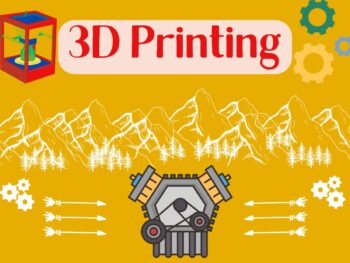In recent years, 3D printing has emerged as a revolutionary technology that has the potential to transform the manufacturing industry. Also known as additive manufacturing, 3D printing involves creating three-dimensional objects from digital designs by adding layer upon layer of material. In this blog post, we’ll take a closer look at the potential of 3D printing in the manufacturing industry and explore some of the challenges that must be addressed as it becomes more widespread.
Potential of 3D Printing in Manufacturing
One of the most significant advantages of 3D printing is the ability to create complex geometries and shapes that would be difficult or impossible to produce using traditional manufacturing methods. This can lead to significant improvements in product design and performance, as well as reduced manufacturing costs. In addition, 3D printing allows for on-demand manufacturing, reducing the need for large-scale production runs and potentially reducing waste.
The potential benefits of 3D printing are already being realized in a range of industries. For example, the aerospace industry is using 3D printing to create lighter, stronger, and more efficient parts for aircraft. The medical industry is using 3D printing to create customized prosthetics and implants that are more comfortable and effective for patients. The automotive industry is using 3D printing to create complex parts more quickly and at a lower cost than traditional manufacturing methods.
Challenges Facing 3D Printing in Manufacturing
Despite the potential benefits of 3D printing, there are several challenges that must be addressed in order for it to become more widespread in the manufacturing industry. First, there are technical challenges related to 3D printer design and operation. 3D printers must be able to produce high-quality parts consistently and reliably, and there are still limitations in terms of the types of materials that can be used.
Second, there are economic challenges related to the cost of 3D printing equipment and materials. While the cost of 3D printers has come down significantly in recent years, they are still more expensive than traditional manufacturing equipment. In addition, the cost of materials for 3D printing can be high, particularly for high-performance materials such as metals.
Third, there are regulatory challenges related to intellectual property and product liability. As 3D printing makes it easier to create replicas of existing products, there is a risk of intellectual property infringement. In addition, there are questions around product liability and who is responsible if a 3D-printed part fails or causes harm.
Addressing the Challenges of 3D Printing in Manufacturing
To address these challenges, there are several steps that can be taken. First, there needs to be continued investment in research and development to improve 3D printer design and operation, as well as to expand the range of materials that can be used. Second, efforts should be made to reduce the cost of 3D printing equipment and materials, potentially through government subsidies or other incentives.
Third, there needs to be clear regulations around intellectual property and product liability. This could include measures such as requiring 3D-printed products to meet certain quality standards, or establishing clear rules around intellectual property ownership and licensing for 3D-printed products.
Conclusion
3D printing has the potential to transform the manufacturing industry, offering significant improvements in product design, performance, and cost. However, there are still challenges that must be addressed in order for 3D printing to become more widespread. Technical, economic, and regulatory challenges must be addressed in order to ensure that 3D printing is safe, reliable, and economically viable. With continued investment and the right regulatory framework, 3D printing has the potential to revolutionize manufacturing, offering benefits for both producers and consumers.











